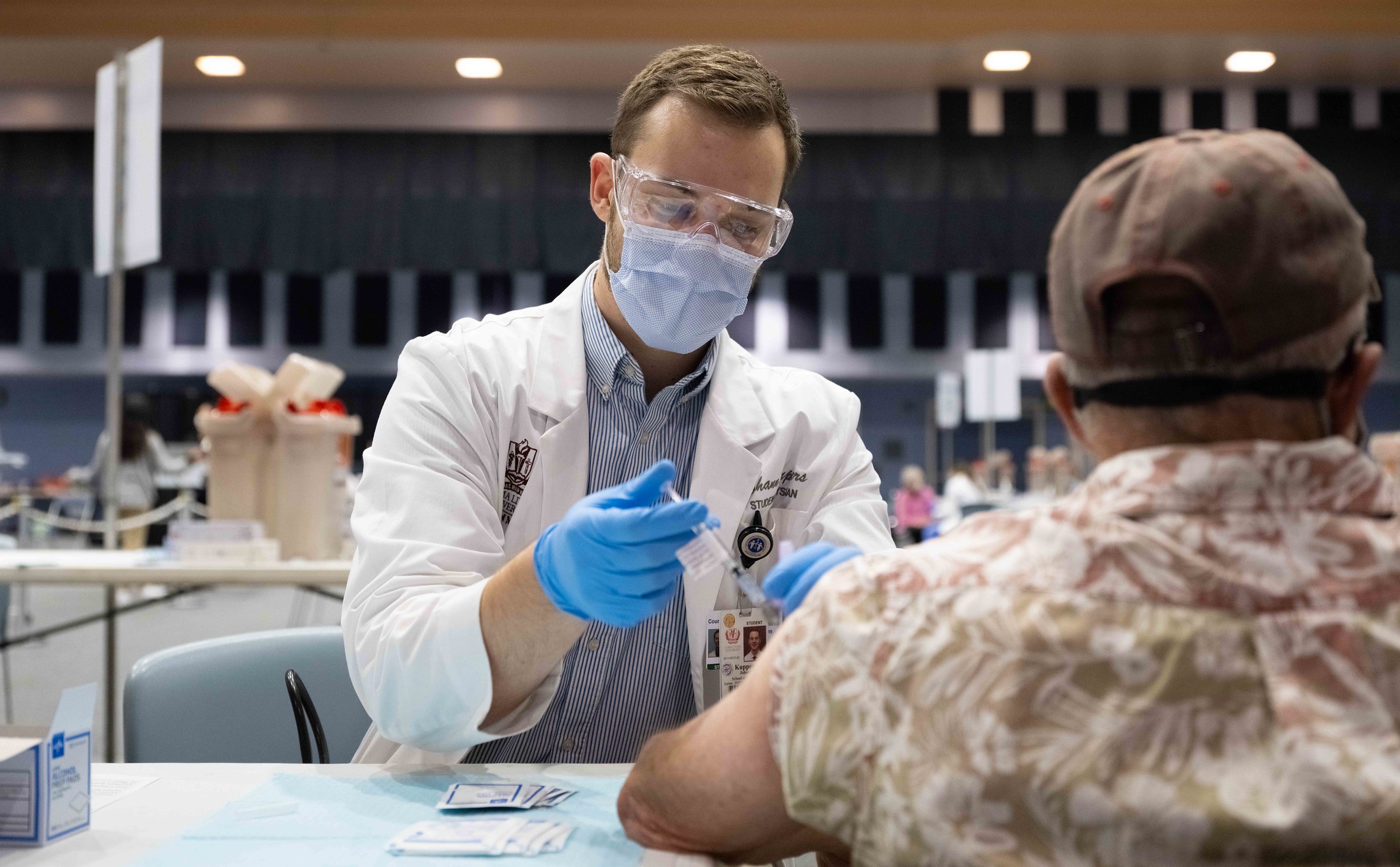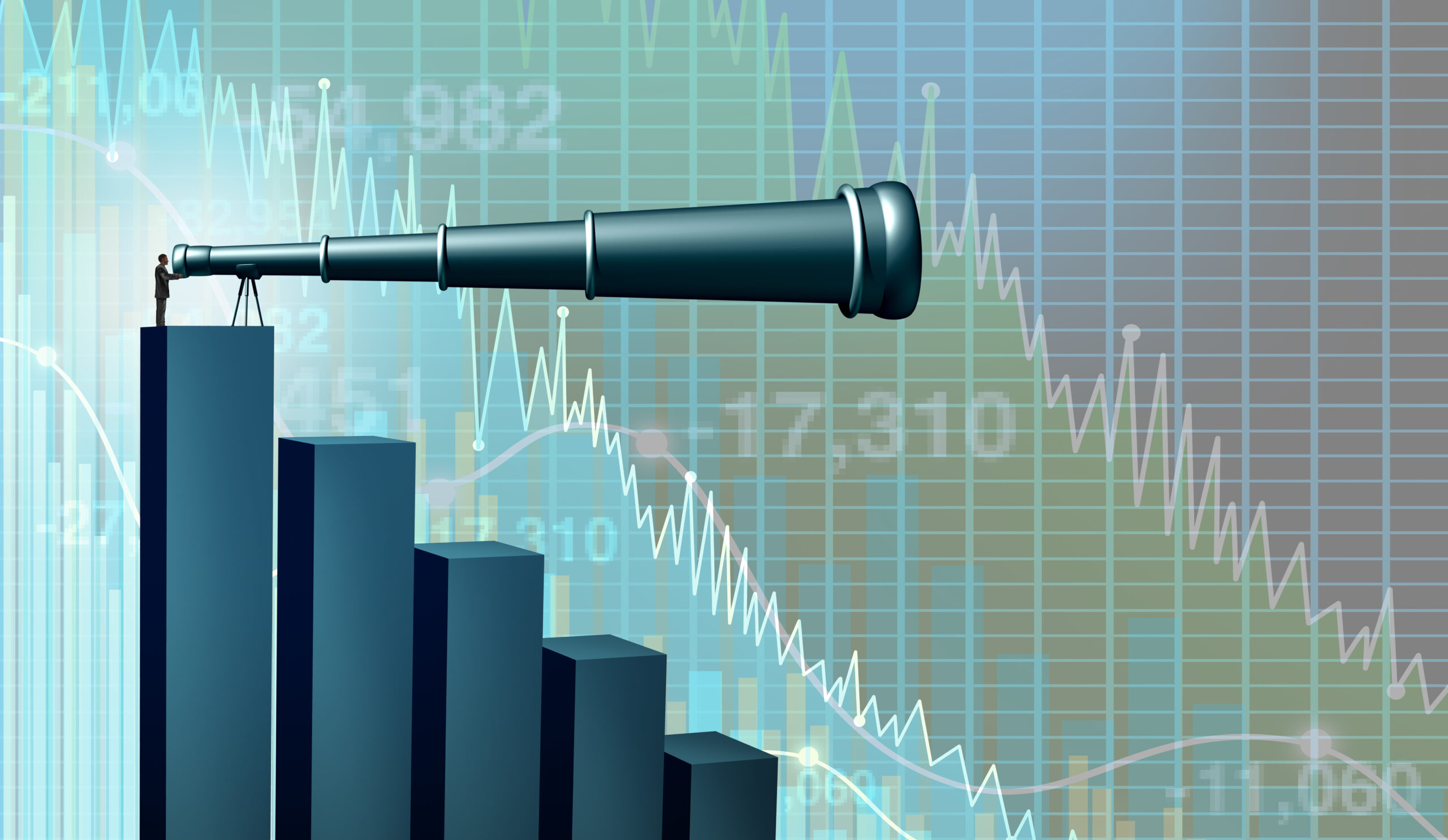Economy
A RECORD BREAKING MONTH OF DECLINES; COVID-19 CLOSURES SLAM CALIFORNIA EMPLOYMENT

State Unemployment Rate Jumps To Highest On Record As Labor Force Shrinks; Silver Lining: Three-Quarters Say They Are ‘Temporarily’ Unemployed
May 26, 2020 — The public health mandates implemented in response to the COVID-19 pandemic are having a devastating effect on the labor market in California. Total nonfarm employment in the state declined by 2,344,700 positions in April, the largest month-to-month decline on record, according to an analysis released jointly by Beacon Economics and the UC Riverside School of Business Center for Economic Forecasting and Development.
This enormous decline in payrolls pushed California’s year-over-year employment growth to -13.4%, the largest annual decline on record. The state performed slightly worse than the national economy, where nonfarm employment declined by 12.9% over the same period.
Even in the midst of a pandemic, however, every cloud may have a silver lining: Around 75% of workers who have been laid off in the state report that they are temporarily unemployed, and the hope is that many will return to their prior jobs as communities across the state begin to re-open. That said, the road back to the unemployment rate the state was enjoying in February (3.9%), is long. The pain of worker dislocation has been eased by Federal and state assistance, but much like the search for a vaccine for the Novel Coronavirus (COVID-19), the cure for the disruption caused to the lives of hundreds of thousands of workers in the state will not be found quickly.
In April, the number of unemployed workers in California increased to 2,885,300, over two and half times the level seen one month earlier. From March to April, 1.8 million workers were added to the state’s unemployment ranks, with the unemployment rate swelling from 5.5% in March to 15.5% in April (the highest on record).
“As extraordinary as these numbers are, they will likely get worse before they get better,” said Taner Osman, Research Manager at Beacon Economics and the UCR Center. “Despite the gradual re-opening of the economy, numbers from the Federal government suggest the ranks of the unemployed have continued to swell throughout May.”
Moreover, the alarming figures understate the true extent of worker dislocation. Over the month, 600,000 workers have left the labor force in California, or in other words, have become discouraged and stopped their search for employment. As such, these residents are not officially counted among the unemployed. In fact, since February 2020, nearly one million workers (947,800) have left the labor force in the state. If these workers were included among the unemployed, and after all, they were either employed or were looking for work just two months ago, the state’s unemployment rate would have been around 21% in April. Since February, the state’s labor force has contracted by 5%.
The disruption has been felt more severely in some industries than others.
Key Findings:
- The Leisure and Hospitality sector led job declines in April, shedding 866,200 positions. This translates into an extraordinary drop of 44% in one month for the sector. Accommodation and Food Services was responsible for the majority of these job losses, where 732,800 positions were lost. As parts of the economy opens up, many of these jobs will return, but the impact of the public health mandated closures, especially the suppressed levels of inter-regional and international travel, means that a significant number of the jobs in these sectors will be slow to recover. The Health Care and Leisure and Hospitality sectors also saw strong employment growth in October, adding 4,800 and 4,600 jobs, respectively. The Finance and Insurance (2,800), Real Estate (2,500), Manufacturing (2,300), Wholesale Trade (2,200), and Construction (2,100) sectors also posted gains in October.
- Other sectors posting sizeable declines in April were Retail Trade (-275,200 or 17% of all jobs), Health Care (-246,500 or 10%), Administrative Support (-150,400 or 13%), Other Services (-142,500 or 28%), and Construction (-132,100 or 15%).
- The state’s highest paying sectors have not been immune, although the declines in these sectors have been less pronounced. In the Professional and Business Services sector 242,800 (-9%) jobs were shed during the month. This included nearly 80,000 (-6%) jobs lost in Professional, Scientific and Technical Services. In the Information sector, the number of jobs fell by 40,500 (-7%) during the month. These represent extraordinary declines in some of the state’s most prized industries.
- Regionally, job declines were concentrated in Southern California. Los Angeles (MD) saw the biggest drop, where payrolls fell by 691,300 during the month. Orange County (-226,200), San Diego (-197,600), and the Inland Empire (-147,600) also shed a significant number of jobs during the month. Over the past year, Orange County (-15.5%) saw the steepest job losses in the region, measured by percentage decrease, followed by Los Angeles (MD) (-14.8%), San Diego (-13.2%), Ventura (-11.8%), and the Inland Empire (-9.5%). In a reversal from what occurred during the Great Recession, the inland parts of the states have not been hit as badly as coastal communities.
- In the San Francisco Bay Area, the East Bay experienced the largest declines, where payrolls fell by 171,800 positions in April. San Francisco (MD) (-169,500), San Jose (-128,100), Santa Rosa (-40,000), Vallejo (-18,400), San Rafael (MD) (-16,800), and Napa (-10,500) also saw payrolls decline during the month. Over the past year, Santa Rosa (-18.1%) had the steepest declines in the region, followed by the East Bay (-14.9%), San Rafael (MD) (-14.2%), and San Francisco (MD) (-13.6%).
- In the Central Valley, Sacramento experienced the largest monthly declines as payrolls contracted by 149,800 positions. Payrolls in Bakersfield (-30,900), Fresno (-30,400), Stockton (-27,000), Modesto (-23,000), and Visalia (-10,000) declined as well. Over the last year, Sacramento (-14.1%) had the steepest declines followed by Redding (-14.0%), Modesto (-11.6%), Bakersfield (-10.3%), Stockton (-10.3%), Merced, (-9.9%), and Chico (-9.9%).
- On California’s Central Coast, Salinas shed the largest number of jobs, with payrolls declining by 21,800 over the month. Payrolls in Santa Barbara (-21,200), Santa Cruz (-19,100), and San Luis Obispo (-19,000) also declined during the month. From a year-over-year perspective, Santa Cruz (-20.4%) shed positions at the fastest rate, followed by San Luis Obispo (14.4%), Salinas (-14.1%), and Santa Barbara (-11.7%).
Business
Economist Christopher Thornberg, State Treasurer Fiona Ma Headline New Forecast Conference

Coming October 5th
Economic Horizon 2024: What Lies Ahead?
The Inland Empire Regional Chamber of Commerce, in collaboration with Beacon Economics and the County of San Bernardino, is thrilled to announce that the anticipated economic forecast conference, Economic Horizon 2024: What Lies Ahead, Inland Empire? will be held October 5th from 3:30 PM to 6:30 PM at the El Prado Golf Courses in the vibrant city of Chino, California.
Esteemed economist, Dr. Christopher Thornberg will present complete outlooks for the U.S., California, and Inland Empire economies. “The Inland Empire stands at the crossroads of remarkable economic opportunities and challenges,” said Thornberg. “I’m excited to unpack the trends and shifts that will define the region’s economic landscape in the next year, and beyond.”
Known for his razor-sharp observations, and fun, energized delivery, Thornberg’s presentation will include pointed discussions about inflation, the Fed’s next move, housing markets, strengths and instabilities in the economy, and what current trends mean for the nation, state, and local region.
The conference will also be graced by the insights of California State Treasurer Fiona Ma as keynote speaker. In her words, “The strength of California’s economy is deeply interwoven with the growth trajectories of its regions. The Inland Empire, with its dynamism and resilience, is a testament to this synergy. I am honored to join ‘Economic Horizon 2024’ and share a vision where policies, partnerships, and potentials converge to elevate the Inland Empire to unprecedented economic heights.”
“This conference is a testament to the collaborative spirit of the Inland Empire and our commitment to fostering a robust, resilient economy,” said Edward Ornelas, Jr., President of the Inland Empire Regional Chamber of Commerce. “Our partnership with Beacon Economics and the County of San Bernardino aims to offer a platform for profound economic discussion, forecasting, and strategic future planning.”
Attendees can anticipate not only expert insights into the economy but also networking opportunities and a chance to connect with key business, government, and nonprofit leaders from across the region.
Full event details are available at: economy.iechamber.org
Economy
The Recession That Didn’t Happen… And Why Most Forecasters Got It Wrong
Bizz Buzz
Workforce Development Earns National Achievement Awards

#bizzbuzz
Inspired by the Board of Supervisors’ commitment to meet the needs of employers and jobseekers and foster a vibrant local economy, the San Bernardino County Workforce Development Department has been honored with eight 2023 Achievement Awards from the National Association of Counties (NACo).
Among the services and initiatives for which WDB was honored were the Rapid Response Community Resource Fair, Economic Recovery Business Outreach Program and, in partnership with the Public Defender’s office, the Record Clearing, Resource and Employment Fairs.
Thanks to strong and stable leadership and policy direction from Board of Supervisors Chair Dawn Rowe and her colleagues on the Board of Supervisors, San Bernardino County received a record-breaking 160 NACo awards this year. The awards reflect the Board’s efforts to cultivate the innovation that leads to the development of outstanding public service programs.
The NACo awards recognize the best of the best among county governments across the U.S. Nationwide, 40,000 county elected officials and 3.6 million county employees provide important services, such as caring for our physical and mental health, maintaining roads, ensuring public safety, strengthening environmental stewardship, administering elections and much more.
“The Workforce Development programs and services recognized by NACo highlight the extraordinary work being done by Workforce Development to enhance career opportunities for our residents and help businesses grow,” Rowe said.
The first Rapid Response Community Resource Fair was developed shortly after United Furniture Industries (UFI) abruptly laid off more 300 employees in the High Desert without advance notice just days before Thanksgiving 2022. When Workforce Development was alerted, staff quickly mobilized businesses and community partners to help connect those laid off to available employment opportunities, as well as various other community resources. Approximately 275 of the affected UFI employees were offered new employment opportunities as a result.
The Economic Recovery Business Outreach Program was a pilot program that tapped into the wide-reaching business network of chambers of commerce. This collaboration between WDB and various chambers of commerce throughout the county was designed to leverage the relationship between chambers and small businesses to build awareness and accessibility to Workforce Development services available to them. Outcomes as a result of this partnership include various successful services including job listings, job fairs, positions filled, and job training assistance, among others.
Perhaps the most impactful program receiving this recognition is the Record Clearing, Resource and Employment Fairs. Workforce Development and the Public Defender’s Office have partnered with businesses and community organizations to increase economic access and equity. The partnership was designed to bring critical resources directly into the community – to churches, community centers, community colleges, and America’s Job Centers – for those looking to remove barriers and increase their access to employment opportunities and other services. The Public Defender helps participants by providing expungement or record clearing services, and Workforce Development brings employers with job opportunities, all within the same location. The events have been well received and proven useful to the community, making this a long-term partnership, not only between Workforce Development and the Public Defender’s office but a long list of other community organizations that have also participated.
“Our team and board feel fortunate to be recognized for these awards,” said William Sterling, chairman of the Workforce Development Board. “The underlying factor of the programs being recognized are partnerships. We feel fortunate for our staff and the relationships developed with other departments and organizations and the impact these services have had within our communities, which is at the core of what public service is supposed to be.”
-

 Opinion1 month ago
Opinion1 month agoSurge in Unemployment Among California Youth Linked to Minimum Wage Hikes
-

 Commercial Real Estate Transactions3 weeks ago
Commercial Real Estate Transactions3 weeks agoSRS Real Estate Partners Announces Record-Breaking $6.15 Million Ground Lease Sale of a New Construction Chick-fil-A Property in Murrieta, California
-

 Health & Wellness3 weeks ago
Health & Wellness3 weeks agoBuddha Bars: A Mother’s Innovative Solution to Healthy Snacking
-
By Press Release1 week ago
California Employment Expansion Continues But Still Trails Nation











